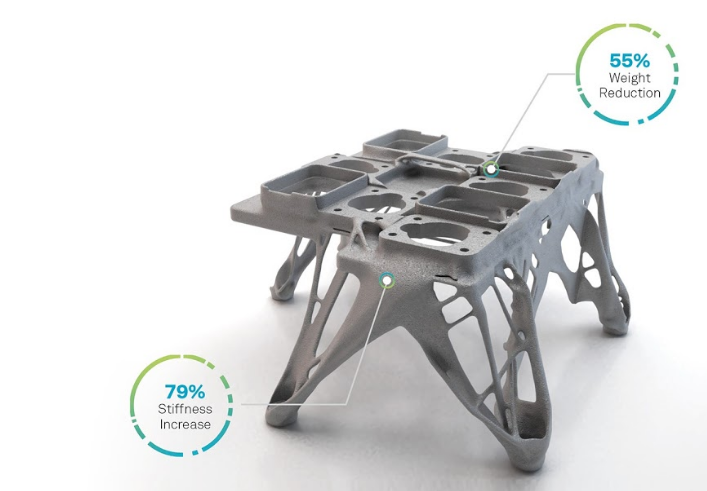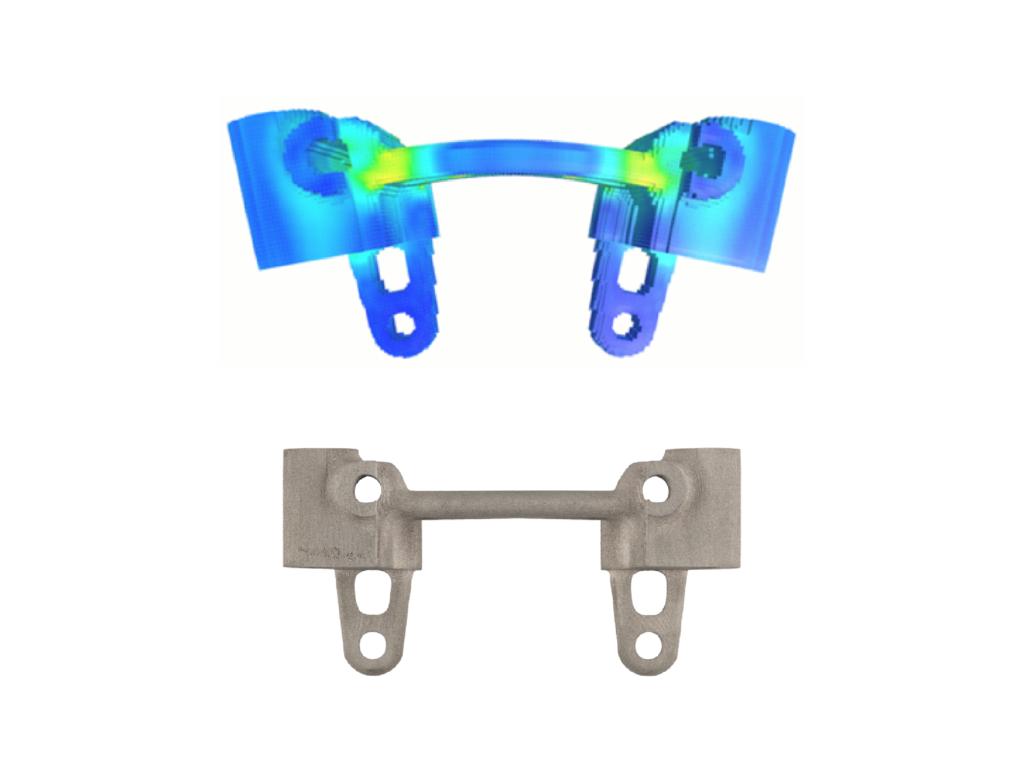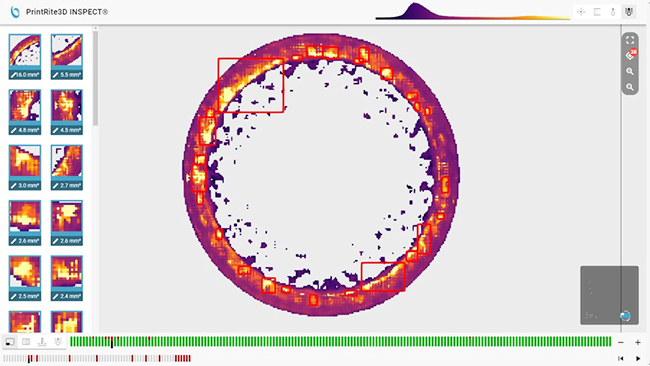This summer, SmarTech Analysis published a new report, titled “Opportunities in Additive Manufacturing Software Markets 2020,” which was its first study of the AM software segment since the inaugural report in 2017, and it had some interesting things to say. Extremely rapid growth is anticipated for the AM software sector, with revenues increasing from $460 million in 2020 to $3.7 billion by 2027, mainly due to the fact that 3D printing software is becoming less of a niche section in the industry and more of a significant one. AM software is continually becoming more advanced, and being integrated into leading CAD/CAM and PLM software solutions as well. In the report, SmarTech analyst Scott Dunham suggests that AM software will “bring order to manufacturing,” while also helping to diversify supply chains.
With that in mind, we’ve compiled some of the year’s biggest stories in the 3D printing software sector for you, putting everything together in one article to save you time. Read on to learn what we found most exciting this year in AM software!
3DEXPERIENCE Connects to Xometry
At 3DEXPERIENCE World 2020 in February, software company Dassault Systèmes made several announcements regarding both its 3DEXPERIENCE and SOLIDWORKS CAD software solutions, but one of the biggest was its MAKE Marketplace integration with Xometry. The Xometry manufacturing platform was tied into Dassault’s SOLIDWORKS and CATIA applications, so that users can directly access Xometry price quotes, without having to manually upload and check part pricing through other online service bureaus. This saves time, and, most importantly for a software developer like Dassault, clicks to perform an action.
Hexagon Integrates Senvol Database
e-Xstream announced it was integrating the Senvol Database to its 10X Integrated Computational Materials Engineering (ICME) solution. Part of Hexagon’s Manufacturing Intelligence division, e-Xstream offers ICME solutions so customers can see fresh design models, with new materials, as well as manufacturing processes. With the integration of the Senvol Database, R&D teams and engineers have access to even more AM data, and its “shortlist” option makes it quick and easy to narrow down the options.
Hexagon had a pretty busy year overall: its MSC Software subsidiary, well-known in the engineering world for its simulation software, released a generative design tool that allows users to rapidly create highly-optimized, print-ready designs from a laptop. Additionally, Hexagon partnered with the IMDEA Materials Institute in Spain, the result of which was models developed by IMDEA for metals being incorporated into e-Xstream software at both the microscale and macroscale.
Dyndrite’s Geometric Kernel Powers HP
A partnership between HP and Seattle startup Dyndrite was announced this summer, in order to combine HP’s end-to-end manufacturing management expertise with Dyndrite’s breakthrough additive technology. By doing so, HP has licensed Dyndrite’s geometric kernel technology to power a software solution of cloud and edge-based digital manufacturing solutions. The partnership builds on an existing relationship that began when HP became one of the inaugural members of the Dyndrite Developer Council, and this fall, the two companies announced the first commercial application they developed together: HP’s Universal Build Manager Powered by Dyndrite, an advanced additive manufacturing software solution built on Dyndrite’s core Accelerated Geometry Engine.
Siemens Tags Sintavia and Evolve for 3D Printing
Siemens announced two big partnerships this year, and the first was with Tier One metal additive manufacturer Sintavia, for the purposes of creating an end-to-end AM software solution as part of Siemens’ Xcelerator AM software portfolio. Siemens is providing all the testing and technical feedback on pre-released software that will be part of future solutions, while Sintavia will become a preferred AM partner of Siemens, with access to and technical support for the resulting AM software ahead of the commercial market. Its second major partnership of 2020 is with Evolve Additive Solutions, as the two work to grow Evolve’s automated Selective Thermoplastic Electrophotographic Process (STEP) technology and optimize it for high-volume 3D printing with Xcelerator.
Stratasys and nTopology Partner for DfAM
Not long ago, Stratasys announced a collaboration with 3D printing and engineering software startup nTopology, in order to make 3D printing easier by offering several customizable, accessible Design for Additive Manufacturing (DfAM) workflows. The reusable workflows and topology optimization provided by nTopology’s software will form the base of the new DfAM workflows, which are meant to be used with multiple Stratasys FDM 3D printing systems. The first workflow resulting from this partnership is the FDM Assembly Fixture Generator, which makes it easier to fabricate jigs and fixtures by automating their design.
Desktop Metal Unveils Live Sinter Simulation
In simulation software news this year, unicorn startup Desktop Metal made headlines when it launched its Live Sinter solution this fall. The software solution replaces the lengthy trial and error process that often occurs with bound metal printing, such as its own binder jetting technology. Live Sinter, which runs on a GPU-accelerated multi-physics engine, accounts for many common issues, like shrinkage, cracks, and deformation, by simulating and automatically compensating for shrinkage and distortion by creating “negative offset” geometries. Once a part is 3D printed and sintered, these geometries should result in the as-designed component.
Additive Works Releases Amphyon 2021 Simulation for Metal LPBF
Just a few weeks ago, Additive Works released the latest version of its Amphyon software, which offers simulation-based process preparation solutions for laser beam melting (LBM) technology. The software solution has multiple modules, including a new Thermal Adaption Module for job preparation in Amphyon 2021. In laser-based printing, temperatures can rise high and fast as the component gets taller, which can lead to poor quality prints, so it’s important to find the correct temperature range and keep the lower speed constant. This new module help users solve these issues through the use of thermal process simulation data: instead of relying on fixed minimum layer times, it adapts the layer times, and makes it possible to set a target temperature, in order to ensure thermal stability.
Sigma Labs Launches Production Series of PrintRite3D
This spring, Sigma Labs launched the new Production Series of its PrintRite3D quality assurance software for metal 3D printing. The Production Series features a new intuitive Production Dashboard, which provides managers with important AI-driven metrics; offers high-resolution IPQM medical-grade 3D forensic analysis; and helps to speed up 3D printing qualification, as well as decreasing the amount of time the design and development process takes. Because PrintRite3D software is machine-agnostic, manufacturers are able to achieve standardized QA processes, even with a supply chain that uses different 3D printers. This launch by Sigma Labs was followed a few months later with the release of its PrintRite3D Lite IPQA solution, which was created to provide compact, smaller, entry-level 3D printers with in-process quality assurance.
Desktop 3D Printers Connect to the Cloud
2020 saw several other important software launches, starting with a summer announcement of the new Ultimaker Essentials paid subscription-based platform, which is meant to help customers overcome some of the key barriers to AM adoption. The platform makes it possible to streamline the process of integrating Ultimaker 3D printing into a company’s IT infrastructure, as well as update its existing 3D printing software, and also includes new eLearning to help customers learn more about Ultimaker’s technology. Soon after this announcement, MakerBot had one of its own, regarding its new MakerBot CloudPrint software, formerly known as MakerBot Cloud. The new workflow is meant to make remote 3D printing collaboration easier by ensuring that all teams and individuals can seamlessly use 3D printing across multiple devices both remotely and onsite. Then, just two weeks later, Zortrax launched its own remote 3D printing management software, inCloud. Through the use of access cameras, this new service enables the remote control and management of one or more Zortrax 3D printers from anywhere in the world. The company actually had its own staff members manage about 200 3D printers at Zortrax headquarters in order to test the solution before its public release.
Markforged Launches the Digital Forge
The final story in this 2020 AM software roundup is about Markforged, and the launch of its 3D printing software, The Digital Forge. The cloud-based software uses machine learning to connect all the company’s products for on-demand 3D printing of production-quality components, as well as sidestep any supply chain issues related to the COVID-19 pandemic. The Digital Forge collects data from over 12,000 networked Markforged 3D printers, and works to make more accurate parts by correcting the course of the print jobs live. Additionally, because Markforged says the cloud-based software behind the platform is updated consistently, its customers should be able to quickly take advantage of any new developments.
That’s it for the 2020 roundup of 3D printing software news. We can’t wait to see what new and exciting announcements will come in 2021!
Subscribe to Our Email Newsletter
Stay up-to-date on all the latest news from the 3D printing industry and receive information and offers from third party vendors.
You May Also Like
Profiling a Construction 3D Printing Pioneer: US Army Corps of Engineers’ Megan Kreiger
The world of construction 3D printing is still so new that the true experts can probably be counted on two hands. Among them is Megan Kreiger, Portfolio Manager of Additive...
US Army Corps of Engineers Taps Lincoln Electric & Eaton for Largest 3D Printed US Civil Works Part
The Soo Locks sit on the US-Canadian border, enabling maritime travel between Lake Superior and Lake Huron, from which ships can reach the rest of the Great Lakes. Crafts carrying...
Construction 3D Printing CEO Reflects on Being Female in Construction
Natalie Wadley, CEO of ChangeMaker3D, could hear the words of her daughter sitting next to her resounding in her head. “Mum, MUM, you’ve won!” Wadley had just won the prestigious...
1Print to Commercialize 3D Printed Coastal Resilience Solutions
1Print, a company that specializes in deploying additive construction (AC) for infrastructure projects, has entered an agreement with the University of Miami (UM) to accelerate commercialization of the SEAHIVE shoreline...



































